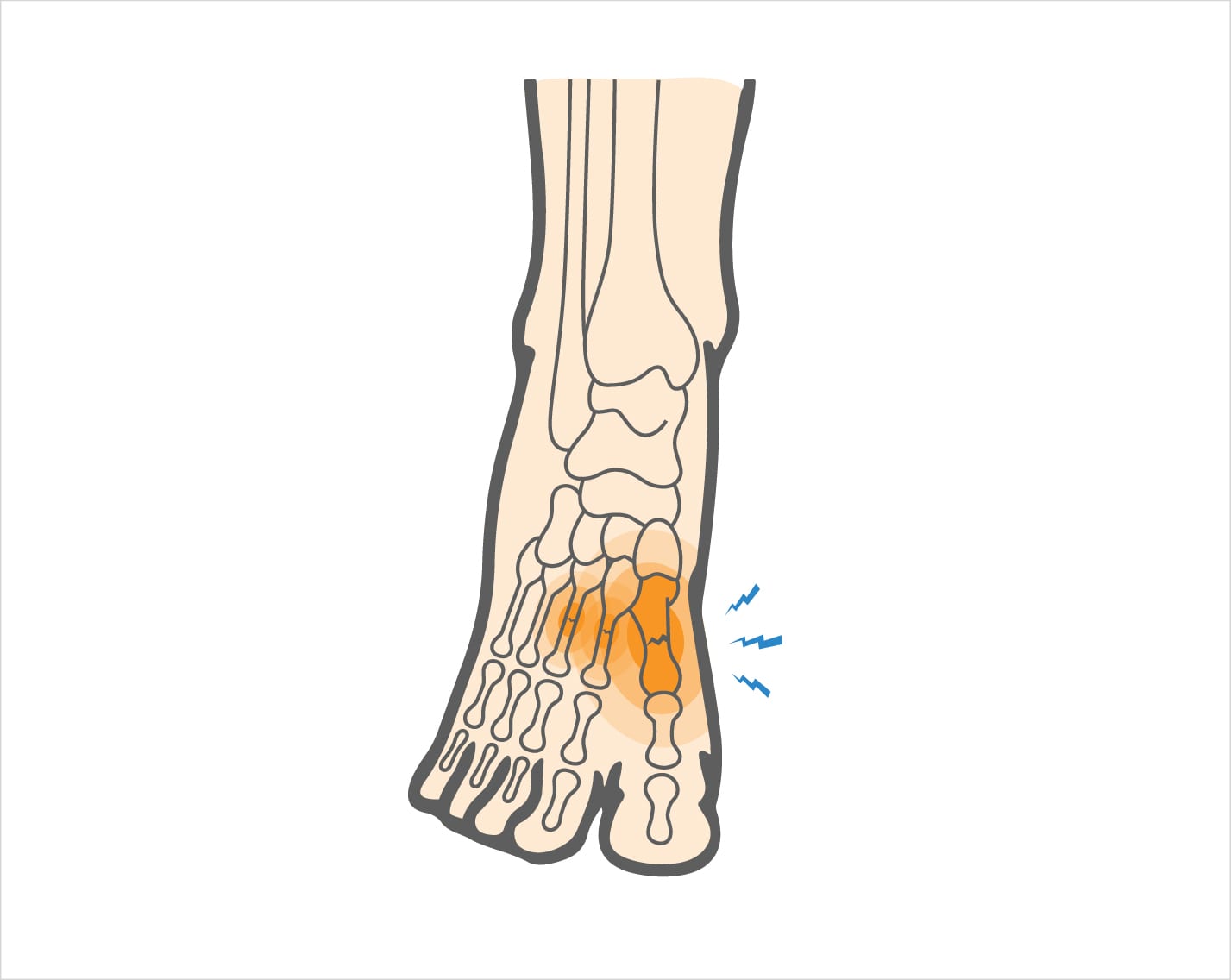The metatarsals are the five long bones in the middle of the foot. They connect the ankle to the toes. A stress fracture is a small break in a metatarsal bone, usually caused by overuse. The second and third metatarsals are the most common sites where a metatarsal stress fracture develops in the foot. This type of foot injury is common among athletes and active individuals, especially runners.
A forefoot fracture of this kind may also be associated with repeated physical stress from high-impact sports or long-distance running. One of the earliest signs of this condition is metatarsal pain that worsens with activity and improves with rest. In some cases, foot swelling may also accompany the pain, indicating possible injury or inflammation in the region.


